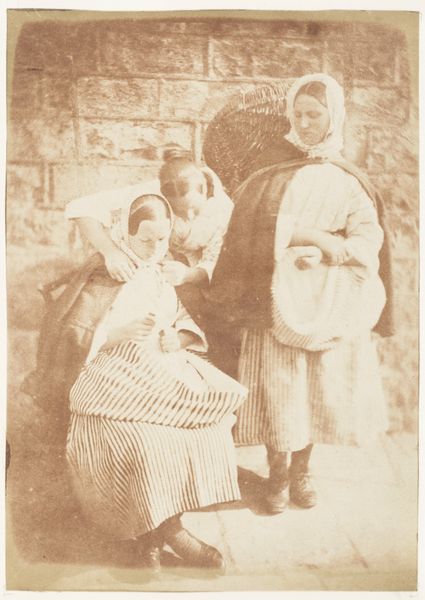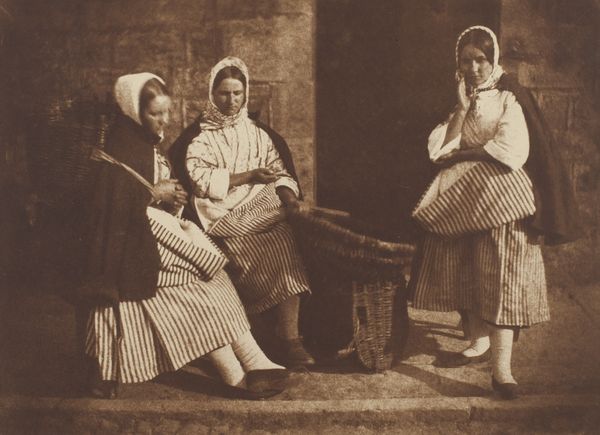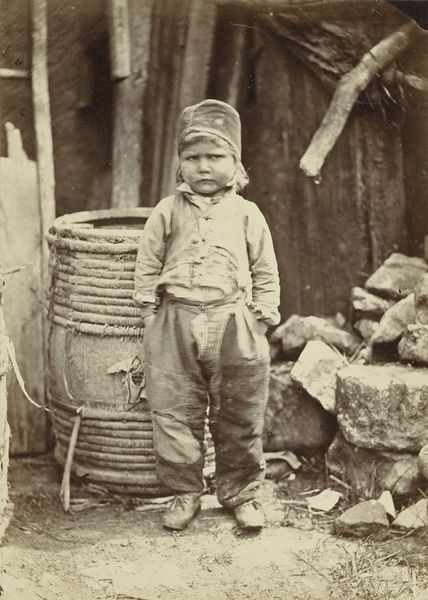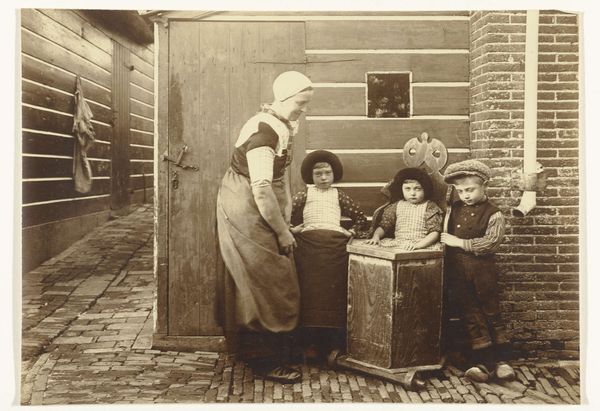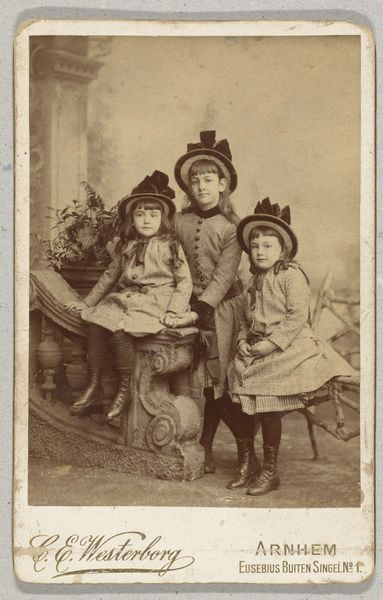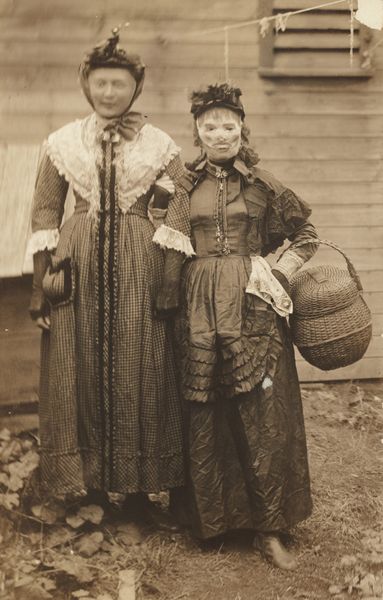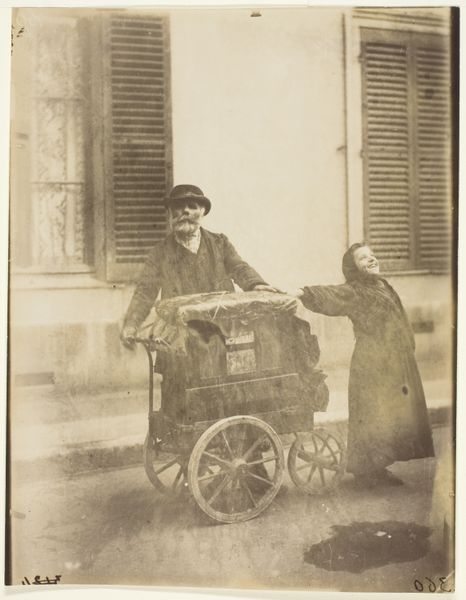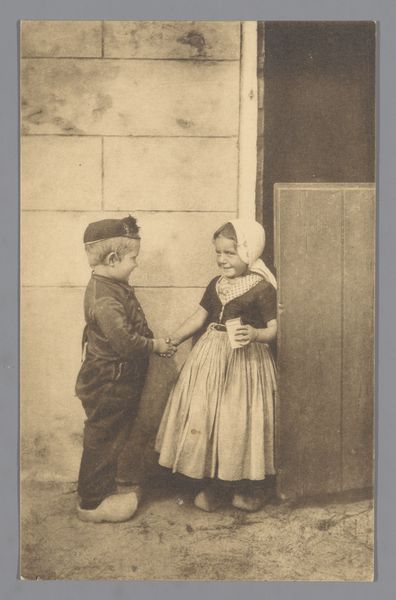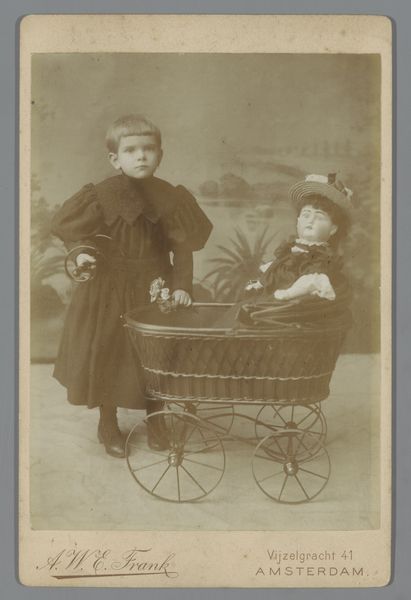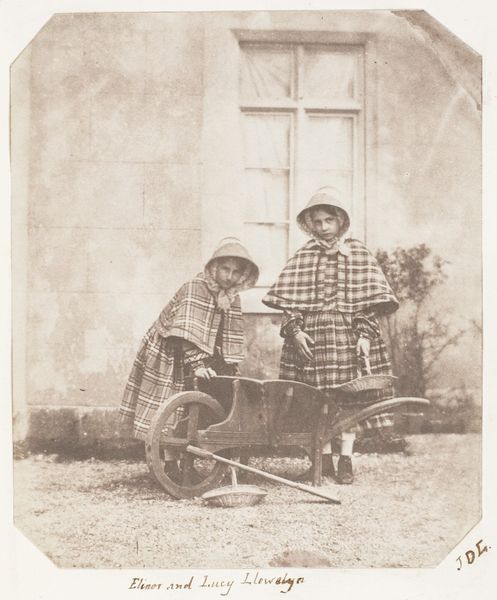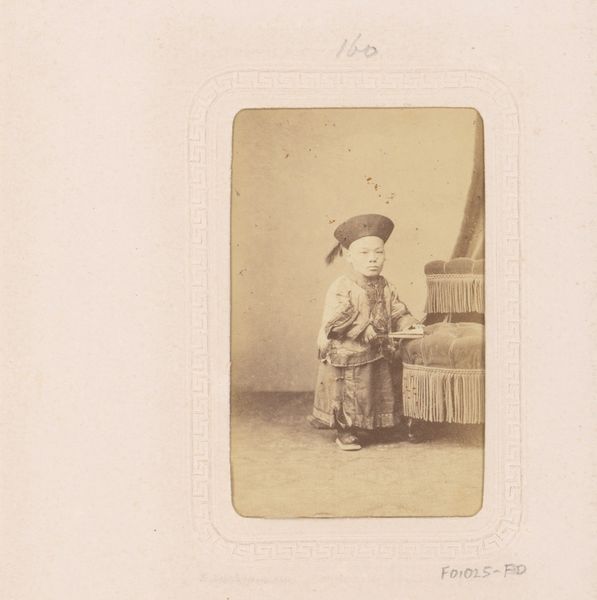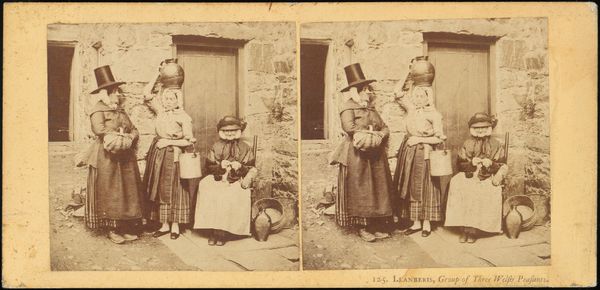
photography, gelatin-silver-print
#
portrait
#
landscape
#
photography
#
historical photography
#
gelatin-silver-print
#
19th century
#
historical
#
realism
Dimensions: sheet (trimmed to image): 19.6 × 14 cm (7 11/16 × 5 1/2 in.) page size: 34.8 × 27 cm (13 11/16 × 10 5/8 in.)
Copyright: National Gallery of Art: CC0 1.0
Curator: Alfred Stieglitz, the influential American photographer, likely captured this gelatin-silver print, "The Truant, Mittenwald," sometime between 1886 and 1896. Editor: My immediate impression is of subdued drama. The muted tones and composition focus my attention on the central figures. There's a tension visible in their postures. Curator: Absolutely. The photograph documents everyday life in a late 19th-century Bavarian village. Stieglitz, deeply embedded in the Pictorialist movement, championed photography as a fine art and frequently depicted working-class European life as a window into understanding global cultural dynamics. The "Truant" suggests themes of childhood, discipline, and societal expectations of the time. Editor: I see that play of light and shadow defining their forms. Look at the textures – the roughspun cloth of the woman’s dress, contrasted with the boy's more structured attire. Even the peeling plaster of the wall contributes. There’s a stark, almost melancholic quality achieved through the careful gradations of tone. Curator: Precisely. The location itself, Mittenwald, was a center for violin making. We might wonder if Stieglitz selected it intentionally. Note, the barrel on the bench suggests the everyday and rural surroundings. His work invited audiences to consider questions about social roles and expectations. Did he see the boy as a future artisan bound by destiny to the countryside? Editor: That is interesting, but visually the boy’s stance—the bare feet and the schoolbag cast aside—tell their own story through their position in the frame. Notice the slight blurring, especially around the edges and his leg? It softens the realism, inviting empathy. Curator: It’s that evocative element which garnered attention at a time when photography was trying to prove its artistic merit. The composition reinforces Stieglitz's belief in photography as more than mere documentation. It serves to critique and celebrate common folk. Editor: True. It transcends mere reportage through its nuanced attention to formal qualities and details of light, form and tonality. Stieglitz wasn’t simply recording; he was constructing a scene with palpable human presence. Curator: Reflecting on this image, one can’t help but appreciate how Stieglitz navigated the complexities of class and culture to create something genuinely moving. Editor: Indeed, he managed to blend realist observation with a kind of poignant aesthetic sensitivity. It makes for an artwork that invites layered, insightful interpretation.
Comments
No comments
Be the first to comment and join the conversation on the ultimate creative platform.
